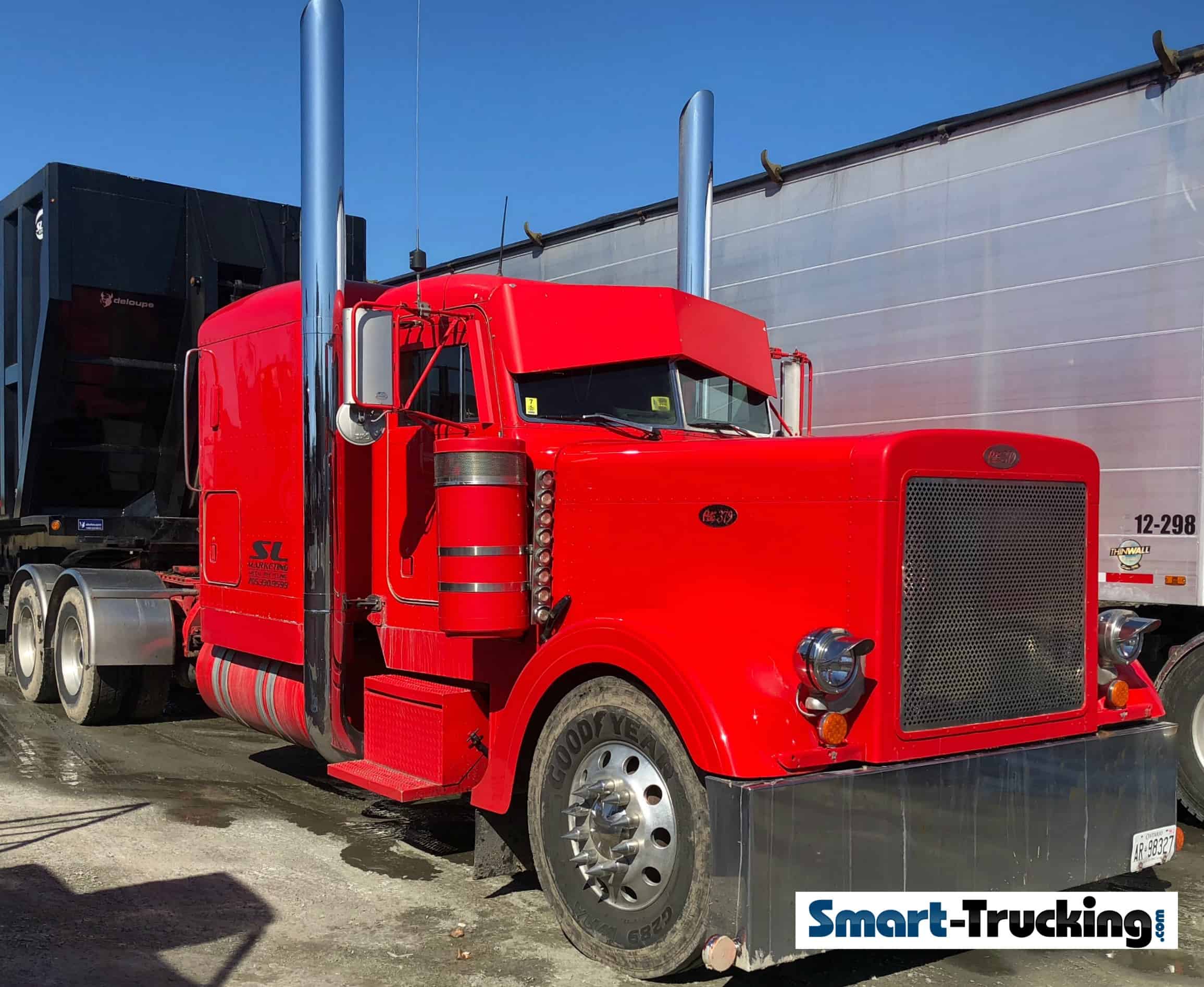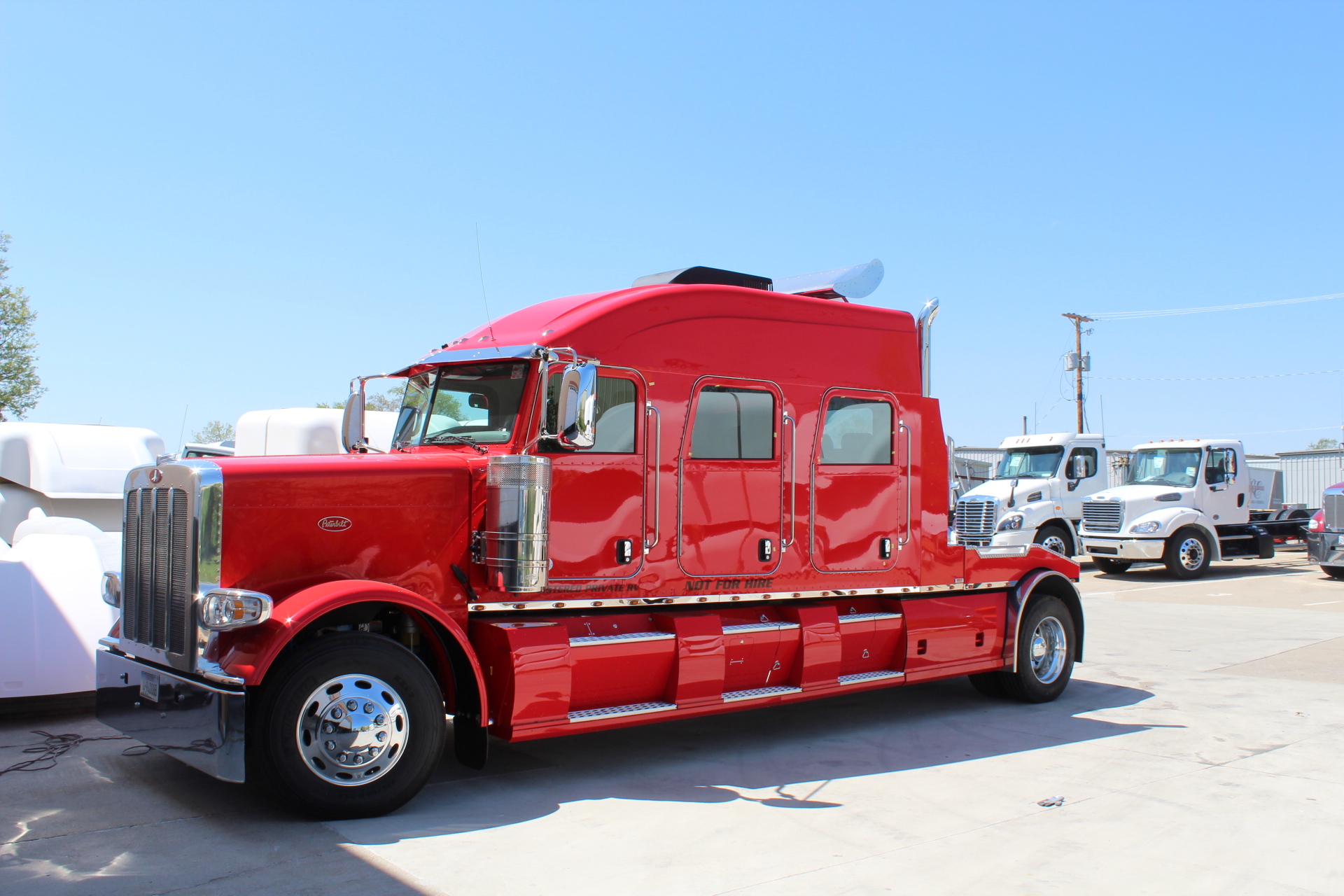Peterbilt: The Icon of American Trucking cars.truckstrend.com
An Enduring Legacy of Power, Prestige, and Performance
In the vast landscape of commercial trucking, few names evoke the same reverence and recognition as Peterbilt. More than just a manufacturer of heavy-duty trucks, Peterbilt Motors Company represents a quintessential American success story, a symbol of durability, craftsmanship, and the enduring spirit of the open road. For decades, the distinctive red oval logo and the sleek, often chrome-laden profiles of Peterbilt trucks have been a common sight on highways, construction sites, and logging roads across North America and beyond. They are not merely vehicles; they are the workhorses that build economies, connect communities, and fulfill the dreams of countless professional drivers.
Peterbilt: The Icon of American Trucking
This comprehensive guide delves into the world of Peterbilt, exploring its rich history, the defining characteristics that set it apart, its most iconic models, and practical considerations for anyone looking to understand, own, or operate these legendary machines. Whether you’re a seasoned trucker, a fleet manager, or simply an admirer of industrial might, join us as we explore what makes Peterbilt an undisputed titan of the trucking industry.
A Legacy of Excellence: The Peterbilt Story
The story of Peterbilt begins in 1939, founded by T.A. Peterman, a visionary who saw the need for higher-quality, more robust logging trucks in the Pacific Northwest. Operating out of Oakland, California, Peterman’s initial focus was on building custom, heavy-duty vehicles that could withstand the grueling demands of the timber industry. From these humble beginnings, Peterbilt quickly earned a reputation for superior engineering, meticulous craftsmanship, and an unwavering commitment to quality.
Throughout the decades, Peterbilt has consistently pushed the boundaries of truck design and technology. From the classic "cab-over-engine" designs of the mid-20th century to the aerodynamic marvels of today, Peterbilt has adapted to changing industry needs while maintaining its core identity. In 1958, Peterbilt moved its manufacturing operations to Newark, California, and later, in 1980, established its primary manufacturing plant in Denton, Texas, where the majority of its iconic trucks are still built today.
Over its 80-plus year history, Peterbilt has become synonymous with durability, driver comfort, and a strong resale value, making it a preferred choice for owner-operators and large fleets alike. It’s a brand that embodies the rugged independence and relentless pursuit of excellence that defines American industry.
The Peterbilt Difference: Why Choose a Peterbilt?
What sets a Peterbilt apart from its competitors? It’s a combination of factors that appeal to both the heart and the bottom line:
1. Uncompromising Quality and Durability

Peterbilt trucks are built to last. Their robust chassis, high-quality components, and meticulous assembly processes ensure a longer lifespan and greater reliability than many other trucks on the market. This durability translates directly into lower downtime and higher productivity over the truck’s operational life.
2. Driver Comfort and Ergonomics
Recognizing that the truck is often a driver’s home and office, Peterbilt places a high emphasis on interior comfort and ergonomic design. Spacious cabs, premium seating options, intuitive dash layouts, and advanced climate control systems contribute to reduced driver fatigue and improved overall well-being, which is crucial for long-haul operations.
3. Customization and Versatility
One of Peterbilt’s hallmarks is its ability to build trucks to exact customer specifications. From engine and transmission choices to axle configurations, interior finishes, and exterior accessories, Peterbilt offers an unparalleled level of customization. This ensures that each truck is perfectly suited for its intended application, whether it’s heavy-haul, vocational, or line haul.

4. Strong Resale Value
Due to their reputation for quality and longevity, Peterbilt trucks consistently command higher resale values than many of their counterparts. This strong residual value makes Peterbilt an attractive investment, as owners can recoup a significant portion of their initial outlay when it’s time to upgrade or sell.
5. Iconic Styling and Prestige
There’s an undeniable aesthetic appeal to a Peterbilt. The classic hood lines, the polished chrome, and the distinctive grille give Peterbilt trucks a commanding presence on the road. For many drivers, owning a Peterbilt is a source of pride, a testament to their professionalism and success in the industry.
Iconic Models and Their Applications

Peterbilt offers a diverse range of models, each designed to excel in specific applications. Here are some of their most iconic and popular trucks:
-
Peterbilt 389: The undisputed king of classic American trucking. With its long hood, traditional styling, and abundance of chrome, the 389 is the spiritual successor to legendary models like the 379. It’s a favorite among owner-operators for its commanding presence, customization potential, and strong resale value. Ideal for long-haul, heavy-haul, and show truck applications.
-
Peterbilt 579: Peterbilt’s flagship aerodynamic highway truck. The 579 is designed for maximum fuel efficiency and driver comfort on long hauls. It features advanced aerodynamics, a spacious and modern interior, and integrates the latest in safety and connectivity technology. Perfect for regional and long-distance freight hauling where fuel economy and driver comfort are paramount.
-
Peterbilt 567: A versatile and rugged vocational truck. The 567 blends traditional Peterbilt styling with modern engineering, making it suitable for a wide array of heavy-duty applications. Its sloped hood offers improved visibility, while its robust chassis can handle the toughest jobs. Commonly used in construction (dump trucks, mixers), refuse, logging, and heavy-haul operations.
-
Peterbilt 520: A specialized low-cab forward (LCF) chassis primarily used for refuse collection. Its optimized design provides excellent maneuverability in urban environments, superior visibility, and a durable chassis built to withstand the rigors of frequent stops and heavy loads.
Customization, Technology, and Powertrain
Peterbilt’s commitment to building trucks tailored to specific needs is evident in its extensive customization options and integration of advanced technology.
Powertrain Excellence
Peterbilt trucks are primarily powered by PACCAR engines (MX-11 and MX-13), renowned for their fuel efficiency, reliability, and powerful performance. These engines are often paired with Eaton Cummins automated manual transmissions (AMTs) like the Endurant, or traditional manual transmissions, offering a range of choices to optimize for fuel economy, power, or specific operational needs.
Advanced Technology
Modern Peterbilt trucks are equipped with a suite of cutting-edge technologies aimed at enhancing safety, efficiency, and connectivity:
- PACCAR Connect: A telematics system that provides real-time vehicle data, diagnostics, and performance monitoring, allowing fleet managers to optimize routes, manage maintenance, and improve overall operational efficiency.
- ADAS (Advanced Driver-Assistance Systems): Features like adaptive cruise control, lane departure warning, collision mitigation, and blind-spot monitoring enhance driver safety and reduce the risk of accidents.
- SmartLINQ®: Peterbilt’s remote diagnostics system that monitors the truck’s health and provides instant notifications for critical issues, helping to minimize downtime by enabling proactive maintenance.
Building to Spec
From the factory, customers can specify virtually every aspect of their Peterbilt truck, including:
- Engine & Transmission: Diverse options for horsepower, torque, and shifting characteristics.
- Axle Configurations: Single, tandem, or tri-drive axles, along with various ratios to suit payload and terrain.
- Suspension Systems: Air ride for comfort, spring suspensions for heavy-duty applications.
- Cab & Sleeper Options: Day cabs, various sleeper sizes (e.g., 44", 72", 80" UltraLoft) with different interior layouts and amenities.
- Interior & Exterior Finishes: Premium materials, custom paint schemes, chrome accents, and lighting packages.
This level of detail ensures that each Peterbilt truck is a purpose-built machine, optimized for its owner’s specific operational requirements.
Ownership and Maintenance Considerations
Investing in a Peterbilt is a significant decision. Here are key considerations for ownership and maintenance:
Initial Cost vs. Total Cost of Ownership (TCO)
While Peterbilt trucks often have a higher initial purchase price compared to some competitors, their superior durability, fuel efficiency (especially in aerodynamic models), lower maintenance costs over time (due to robust components), and strong resale value often result in a competitive or even lower Total Cost of Ownership (TCO) over the truck’s lifespan.
Fuel Efficiency
Modern Peterbilt models, particularly the 579, are engineered for optimal fuel economy. Factors like engine spec, transmission choice, axle ratios, aerodynamic features, and driver habits all play a role. Utilizing telematics and driver training can further enhance fuel efficiency.
Parts Availability and Dealer Network
Peterbilt boasts an extensive dealer network across North America, ensuring ready access to genuine parts, certified service technicians, and specialized diagnostic tools. This widespread support minimizes downtime and keeps trucks on the road.
Routine Maintenance Tips
- Follow Manufacturer’s Schedule: Adhere strictly to Peterbilt’s recommended service intervals for oil changes, filter replacements, and system checks.
- Pre-Trip Inspections: Conduct thorough daily inspections of tires, lights, fluid levels, brakes, and critical components.
- Fluid Analysis: Regular oil and coolant analysis can detect potential issues early, preventing major breakdowns.
- Tire Management: Proper inflation, rotation, and alignment extend tire life and improve fuel economy.
- Professional Servicing: Utilize authorized Peterbilt dealerships for major repairs and specialized diagnostics to ensure proper maintenance and genuine parts.
Challenges and Solutions
While Peterbilt offers numerous advantages, there are a few considerations to keep in mind:
1. Higher Initial Investment
Challenge: New Peterbilt trucks come with a premium price tag, which can be a barrier for some owner-operators or smaller fleets.
Solution: Consider financing options, leasing agreements, or exploring the robust used Peterbilt market. A well-maintained used Peterbilt can still offer excellent value and reliability.
2. Customization Complexity
Challenge: The sheer number of customization options can be overwhelming for first-time buyers.
Solution: Work closely with an experienced Peterbilt sales representative. They can guide you through the process, helping you select the right specs for your specific needs and budget. Leverage online configurators and resources provided by Peterbilt.
3. Weight Considerations (for certain models)
Challenge: Some traditional models, like the 389, are inherently heavier due to their classic design and extensive use of metal components, which can impact payload capacity.
Solution: If maximizing payload is critical, consider more lightweight or aerodynamic models like the 579, or discuss weight-saving component options with your dealer when custom-ordering.
Peterbilt Estimated New Truck Price Ranges (Highly Variable)
It is crucial to understand that the price of a new Peterbilt truck is highly variable and depends on numerous factors, including:
- Model: Different models have different base prices.
- Engine & Powertrain: Horsepower, torque, transmission type (manual, AMT).
- Configuration: Axle count, wheelbase, suspension type.
- Sleeper Size & Amenities: From day cabs to large custom sleepers with luxurious interiors.
- Features & Technology: ADAS, telematics, infotainment systems, premium interior finishes.
- Customization: Paint schemes, chrome packages, auxiliary equipment.
- Market Conditions & Dealer Specifics: Regional pricing, incentives, and dealer markups.
- Emissions Compliance: Costs associated with modern emissions systems.
The table below provides extremely broad estimated starting price ranges for new trucks. These figures are for general guidance only and can fluctuate significantly. Used truck prices will vary even more based on age, mileage, condition, and market demand.
| Peterbilt Model | Estimated New Price Range (USD) | Primary Application | Key Factors Influencing Price |
|---|---|---|---|
| Peterbilt 579 | $160,000 – $280,000+ | Long-Haul, Regional | Engine (PACCAR MX-13, Cummins X15), transmission, sleeper size (44" to 80" UltraLoft), premium interior packages, ADAS features, custom paint/chrome. |
| Peterbilt 389 | $170,000 – $320,000+ | Long-Haul, Heavy-Haul, Show | Engine (PACCAR MX-13, Cummins X15), transmission, sleeper size, extensive chrome options, custom paint, premium interior, specific axle configurations for heavy-haul. |
| Peterbilt 567 | $150,000 – $290,000+ | Vocational (Dump, Mixer, Logging, Refuse) | Chassis configuration, PTO (Power Take-Off) options, specialized body upfitting, engine size, heavy-duty components, specific vocational packages. |
| Peterbilt 520 | $180,000 – $260,000+ | Refuse, Vocational | Chassis durability, specialized compaction body integration, transmission type (often automatic for frequent stops), specific safety features for refuse collection. |
Disclaimer: These are rough estimates for new base models and up. A fully customized, top-of-the-line Peterbilt 389 with a large sleeper and every option could easily exceed $350,000. Used trucks can range from under $50,000 to well over $150,000 depending on condition and age. Always consult an authorized Peterbilt dealer for accurate and personalized quotes.
Frequently Asked Questions (FAQ) about Peterbilt
Q1: Are Peterbilt trucks reliable?
A1: Yes, Peterbilt trucks are renowned for their reliability and durability. They are built with high-quality components and undergo rigorous testing, contributing to their long lifespan and strong performance. Proper maintenance is key to maximizing their reliability.
Q2: What is the best Peterbilt model?
A2: The "best" model depends entirely on your specific application.
- For classic styling and a commanding presence, the 389 is iconic.
- For fuel efficiency and modern comfort in long-haul, the 579 is ideal.
- For heavy-duty vocational work, the 567 is a versatile and robust choice.
Your specific needs for payload, terrain, budget, and desired aesthetics will dictate the best model for you.
Q3: How much does a Peterbilt truck cost?
A3: The cost varies significantly. A new Peterbilt can range from approximately $150,000 to over $350,000 depending on the model, engine, features, and customization. Used trucks are considerably less expensive but vary widely by age, mileage, and condition. Refer to the price table above for general estimates and remember to consult a dealer for precise quotes.
Q4: Where are Peterbilt trucks manufactured?
A4: Peterbilt trucks are primarily manufactured at the company’s main plant in Denton, Texas, USA. Some specialized vocational models might be produced at other PACCAR facilities.
Q5: What engines do Peterbilt trucks use?
A5: Peterbilt trucks primarily use PACCAR engines (MX-11 and MX-13), which are manufactured by their parent company, PACCAR Inc. Some models may also offer Cummins engines (e.g., Cummins X15) as an option.
Q6: What is the difference between Peterbilt and Kenworth?
A6: Peterbilt and Kenworth are both owned by PACCAR Inc. While they share some common components (like PACCAR engines and certain chassis elements), they maintain distinct brand identities, styling, and model lineups. Peterbilt is often associated with a more classic, driver-centric, and custom aesthetic, while Kenworth is known for its ruggedness and efficiency. Ultimately, both are premium brands, and the choice often comes down to personal preference, specific model features, and dealer support.
Q7: Is a Peterbilt a good investment for an owner-operator?
A7: Many owner-operators consider Peterbilt a strong investment due to its reputation for quality, durability, driver comfort, and excellent resale value. While the initial cost can be higher, the lower total cost of ownership over the long term, combined with driver satisfaction and pride of ownership, often makes it a worthwhile choice for those who rely on their truck for their livelihood.
Conclusion: The Enduring Allure of Peterbilt
Peterbilt stands as a testament to American ingenuity and enduring quality. From its beginnings building custom logging trucks to its current position as a leader in innovative heavy-duty transportation, Peterbilt has consistently delivered trucks that are not only powerful and reliable but also embody a certain prestige and allure.
Choosing a Peterbilt is more than just selecting a vehicle; it’s investing in a legacy of excellence, a commitment to driver comfort, and a promise of lasting performance. While the initial investment might be substantial, the long-term benefits of lower downtime, higher efficiency, and strong resale value make Peterbilt a compelling choice for anyone serious about the business of trucking. As the industry evolves, Peterbilt continues to innovate, ensuring that its iconic trucks remain at the forefront of power, prestige, and performance for generations to come. The open road, for many, will forever be synonymous with the gleaming chrome and powerful rumble of a Peterbilt.

